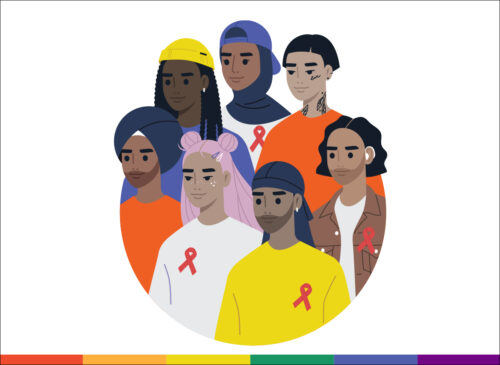
Across Canada, universities are working toward reopening for in-person classes. After a year and a half of teaching mostly online due to COVID-19, universities now have to consider how much ongoing student demand there will be for online options and what resources to allocate for it.
How will students choose what they want to study in-person or online? What influence will the experience of fully online learning before and during the pandemic have on what they’re now looking for? These are crucial questions.
Many students undoubtedly experienced some benefits of online learning during the pandemic. But as we launch into new ways of teaching and learning post-pandemic, professors and administrators should resist making easy assumptions about what technological “progress” means or demands.
‘Emergency remote teaching’
Traditionally, a fully online university course is developed by a professor with substantial support from someone with expertise in online learning (if the professor doesn’t have such expertise themselves), following a substantial body of research. During COVID-19 there wasn’t time for this.
Instead, many professors were forced to hurriedly adapt courses normally taught in-person for the internet. For this reason, online teaching experts called the rapid switch online “emergency remote teaching.”
Remote courses weren’t expressly designed to offer complete flexibility in space and time like a typical fully online course, but this doesn’t mean they couldn’t be great. Still, when my colleagues and I surveyed 100 undergraduates in the summer of 2021 to understand their experiences with such remote teaching, we weren’t surprised to hear that many courses differed little from the traditional in-person course, other than class meetings being held over Zoom.
Over the past year, universities did offer instructors support from online teaching experts. Some professors who had taught their whole careers in the classroom invested a lot of effort in pre-recording lectures and changing class activities to provide more flexibility during the pandemic, to maximize the benefits of a technology-mediated experience and to minimize its problems. This kind of practice should continue.
But let’s not get carried away. Some educational technology promoters viewed the forced shift to remote teaching as a reckoning for old-fashioned instructors who had refused to accept the progress of technology. What they fail to realize is that it wasn’t just the instructors but many students who preferred the status quo of attending classes in-person.
Positives and negatives
Remote learning has no doubt been a gift for some students, such as those who are chronically ill and face difficulty attending class regularly.
Remote learning also works well for those who don’t want to move in order to complete their studies.
Yet, there were also losses. Some students learned that not getting to go to campus meant the loss of community and made it harder to find quiet time and space to study.
Finally, since students sometimes choose to attend classes on campus to make themselves keep pace with their studies, those who had avoided fully online classes in the past may have discovered how much they’d relied on the in-person experience to succeed.
Choices before the pandemic
Research from the United States before the pandemic showed that despite a gradual rise in student enrolments in fully online courses and programs over the years, the majority of post-secondary students had continued to choose in-person courses. The same was the case in Canada.
Prior to the pandemic, my colleagues and I conducted a study of how undergraduates at a public university in Canada chose which courses to take online. We surveyed 650 students from courses that were offered both in-person and fully online at the same time, across a wide range of disciplines, from archeology to computing science.
Among the things we asked students about were practical issues like how long their commute to campus was, their level of responsibility to care for others at home and the number of hours per week they worked. We also asked about things like their goals in taking a course, and how organized they were about their study time. We used a statistical technique called logistic regression to evaluate the strength of these different influences on their preference for online or in-person courses.
Reasons for choosing online
About 30 per cent of the time, students enrolled in an online course as their second choice after failing to get into the equivalent in-person course.
The more important a student thought the course was for them and the more inclined they were to seek help when they were struggling, the less likely they were to prefer the online version.
The more courses a student had taken online previously, the more likely they were to prefer the online version of a course. They were also more likely to prefer the online course the better they were at organizing their study time, and more they aimed to minimize their effort on the course.

Selective, strategic
Overall, findings from our pre-pandemic survey made clear that students took online courses selectively and strategically. Since many students could not get into their preferred offering of a course, the choice they faced was not so much between taking a particular course online or in-person this semester, but between taking the online course as their non-preferred choice this semester, or waiting and trying to get into the in-person course later.
Students also told us that they often felt forced into taking online courses to fill their loads, since in-person courses so often conflicted.
These findings contrast with the assumption sometimes seen in academic research that the important limiting factor to the expansion of online learning is not student demand, but reluctant professors. And this summer, a majority of students surveyed by my colleagues and I told us that the pandemic had not really changed what was important to them when choosing whether to take a course online or in-person.
The future of university learning
Some remote teaching has been innovative in ways that enhanced students’ learning experiences. These innovations should continue.
But if students have been subjected to lengthy lectures via Zoom, with few breaks and little student-instructor or peer-to-peer interaction — something students also reported this summer in our survey — they might be desperate to get back into an old-fashioned classroom.![]()
Kevin O’Neill, Associate Professor, Education and Technology, Simon Fraser University
This article is republished from The Conversation under a Creative Commons license. Read the original article.










